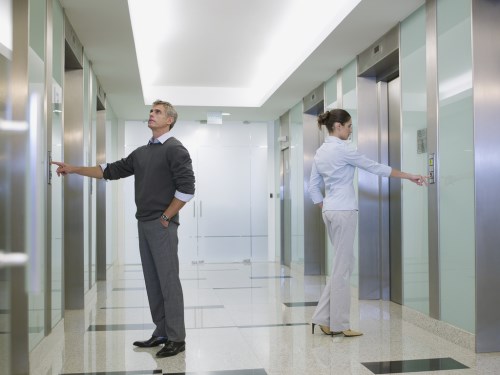TSSA Elevator Availability Study - Final Report

There are almost 20,000 passenger elevators across more than 10,000 residential and institutional buildings in Ontario.1
Elevators are often the only way for residents to access their homes, for first responders to reach emergencies, or for people to reach their daily destinations efficiently. These elevators are used in a variety of ways depending on the building, population, location, and a host of other factors. Consider the rental tenant accessing their home, the retirement home resident in a wheelchair going to a medical appointment, or the condominium owner who expects good service in their new building.
As the existing stock of elevators ages and the province experiences a rapid growth in construction of buildings (including high-rise condominiums), elevator availability is under increasing scrutiny. Over the past few years, stakeholders across Ontario have raised a variety of issues related to elevator availability, including:
- Public and worker safety
- Accessibility for users, access to homes, and access for emergency responders
- Cost and speed of maintenance
- Slow repair times and long elevator outages
- Owner and user knowledge of elevators as a key asset
- Entrapment and emergency response processes
- Labour supply of elevator mechanics
- Fair and open markets for contractors
- Impact of regulation of the elevator industry
The topic of elevator availability has been covered in a variety of mainstream media in recent months, and has garnered political attention.2 In March 2017, MPP Han Dong tabled a private member’s bill, Bill 109, Reliable Elevators Act, 2017, in the Ontario legislature. It has now passed second reading and been referred to the Standing Committee on Regulations and Private Bills. The bill (in its present form) will require a person who applies for a permit to construct a building with seven or more storeys to show that the building will have enough elevator capacity. It will also require an elevator that breaks down to be repaired within 14 days for most residential buildings and seven days for long-term care homes and retirement homes. Finally, the bill calls for more robust and widespread elevator usage studies for new buildings. The MPP acknowledges that much of the input he received was anecdotal and is open to a more robust, evidence-based set of recommendations relative to this topic.
To respond to emerging concerns associated with elevator availability and the lack of data on the topic, the Technical Standards and Safety Authority (TSSA), in partnership with the Ministry of Government and Consumer Services (MGCS) and the Ministry of Municipal Affairs (MMA), have engaged Retired Superior Court Justice Douglas Cunningham to author this independent study, with support from Deloitte’s Public Sector Strategy team.
The purpose of this study is to define and assess the state of elevator availability in Ontario, identify key drivers of issues with availability, and propose a series of solutions (both regulatory and non-regulatory) to inform policy discussions.
1 TSSA data. Examples of residential buildings include condominiums, rental housing, or student residences, while institutional buildings include retirement homes, long-term care homes, and other group homes. This study has focused on institutional buildings with long-term residents. Hospitals and other short-term health facilities fall outside the scope of the study.
2 As the core component of this study, the proposed definition of “Availability” is discussed in detail in Section 2. Where the term “Availability” is not explicitly defined in this report, as availability is understood in a general sense as the reliable functioning and timeliness of an elevator.
The final report is attached below in both English and French for your reference.
For media inquiries, please contact media@tssa.org

